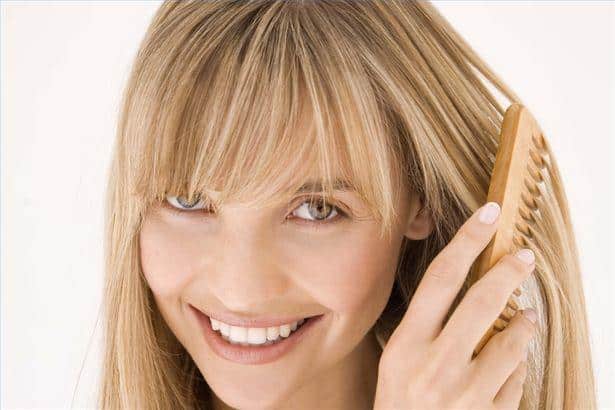Hey there, beautiful soul! Ever gazed at someone’s stunning hair and wondered, “What’s her secret?”
While we often get lost in the maze of hair products and treatments, sometimes it’s the simple, everyday rituals that make all the difference.
Ready to uncover the timeless secrets to enviable locks? Let’s dive deep into the world of hair magic!
1. Choosing the Right Comb for Your Hair: A Comprehensive Guide
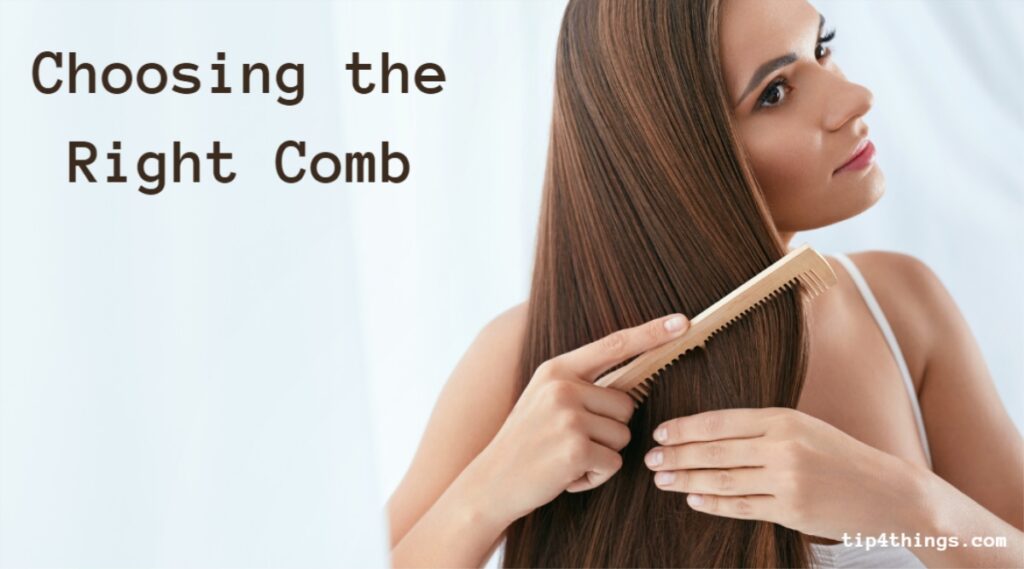
The comb you use can make a world of difference to your hair’s health and appearance. It’s not just about detangling;
It’s about ensuring minimal breakage, promoting hair growth, and maintaining that natural shine. Here’s a breakdown of the best combs for various hair types and needs:
-
Wide-Toothed Comb: This is a must-have in every haircare arsenal. Perfect for detangling wet hair, it reduces breakage and is especially great for those with wavy or curly locks.
-
Fine-Toothed Comb: Ideal for finer hair types, this comb gives precision and is often used for styling, especially to achieve sleek looks.
-
Straightening Comb: If you’re using heat tools, this comb can be your best friend. It helps achieve that pin-straight look while ensuring even heat distribution.
-
Cutting Comb: As the name suggests, this is a favorite among hairstylists for cutting and trimming. Its fine and wide teeth offer versatility.
-
Hair Pick: For those with curly or coily hair, a hair pick can help add volume at the roots and define those curls.
-
Teasing Comb: Want to add some oomph to your hairstyle? This comb is designed to add volume by backcombing the hair gently.
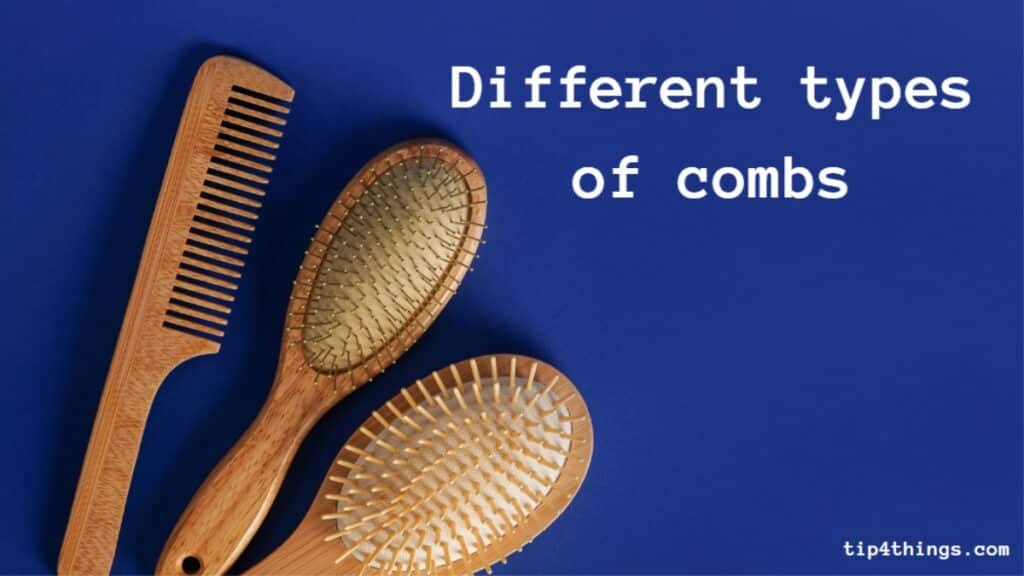
Tips for Comb Usage:
- Material Matters: Wooden combs are sustainable, reduce static, and are gentle on the hair. They’re especially recommended for curly hair.
- Clean Regularly: Just like your hair, your comb needs cleaning too. Regularly remove hair strands and wash with soapy water.
- Comb Gently: Always start detangling from the tips and work your way up to the roots to minimize breakage.
2. Swim Smart: Protect Your Precious Hair from Chlorine
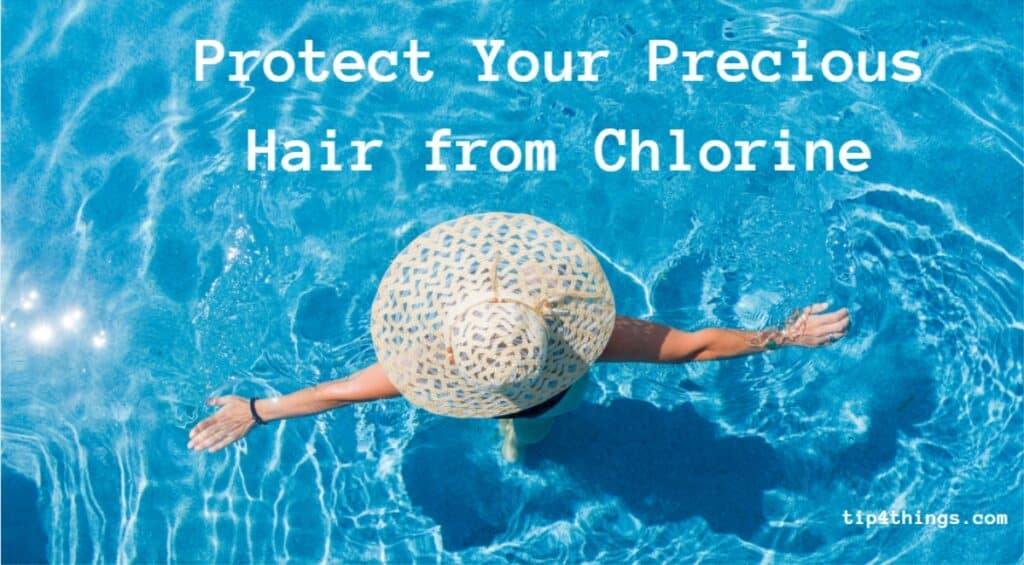
Ah, the joy of diving into a refreshing pool! But wait, what about your hair? Chlorine can be a real party crasher, leaving your hair dry, brittle, and sometimes even greenish (yikes!).
But don’t fret; with the right precautions, you can enjoy your swim without compromising your hair’s health. Here’s how:
Pre-Swim Rituals:
-
Wet Your Hair: Before you jump in, rinse your hair with clean water. This ensures that your hair absorbs less chlorine.
-
Oil It Up: Natural oils, like coconut or olive oil, act as a barrier, preventing chlorine from stripping your hair’s natural oils. A light coat can make a significant difference.
During the Swim:
-
Wear a Swim Cap: It might not be the most fashionable accessory, but it’s the most effective way to shield your hair from chlorine. Silicone caps are especially great as they offer a snug fit.
-
Tie It Up: If caps aren’t your thing, consider tying your hair in a bun or braids. This reduces the surface area exposed to chlorine.
Post-Swim Care:
-
Immediate Rinse: Once you’re out of the pool, rinse your hair thoroughly with clean water to wash away any residual chlorine.
-
Deep Conditioning: Chlorine can be drying, so treat your hair to a deep conditioning session post-swim. This helps restore moisture and keeps your hair soft and shiny.
-
Avoid Heat: After a swim, it’s best to let your hair air dry. If you must use a blow dryer, opt for the cool setting.
Bonus Tip: If you’re a regular swimmer, consider investing in shampoos and conditioners specially formulated to combat chlorine damage. They help neutralize chlorine and restore your hair’s pH balance.
3. Drying Your Hair: The Gentle Art of Keeping It Healthy

Fresh out of the shower with dripping wet hair? Resist the urge to rub it vigorously with a towel! Wet hair is at its most vulnerable, and the way you dry it can make a world of difference to its health and shine.
Here’s a guide to drying your hair without causing any harm:
Pre-Drying Rituals:
-
Dab, Don’t Rub: Instead of rubbing your hair, gently dab or blot it with a towel to remove excess water. This reduces friction and minimizes breakage.
-
Use the Right Towel: Pure cotton or bamboo yarn towels with a high GSM are gentle on damp hair. Microfiber towels or wraps are also a great choice as they’re super absorbent and reduce drying time.
Air-Drying:
-
The Natural Way: Letting your hair dry naturally is one of the best methods. However, ensure it doesn’t remain damp for too long, as this can weaken the hair shafts.
-
Loose Hairstyles: If you’re air-drying, consider loose hairstyles like braids or buns. They prevent tangles and give your hair a wavy texture once dry.
Blow-Drying:
-
Heat Protection: Always use a heat protection spray or serum before blow-drying. It acts as a shield against the heat.
-
Cool Setting: If you’re in a hurry, use the cool setting on your blow dryer. It might take a tad longer, but your hair will thank you for it.
-
Keep a Distance: Hold the dryer at least 6 inches away from your hair to prevent overheating.
Alternative Methods:
-
Plopping: This method involves wrapping your hair in a T-shirt or microfiber towel. It’s especially great for curly-haired folks as it enhances the curl pattern.
-
Hair Wraps: Consider using specialized hair wraps or turbans. They’re designed to be gentle on the hair and speed up the drying process.
Pro Tip: For those who love a good swim or gym session, keep a microfiber towel handy in your kit. It’s not just light and quick-drying, but also a hair savior, ensuring your locks remain as fabulous as you!
4. Brushing Your Hair: The Gentle Path to Tangle-Free Locks
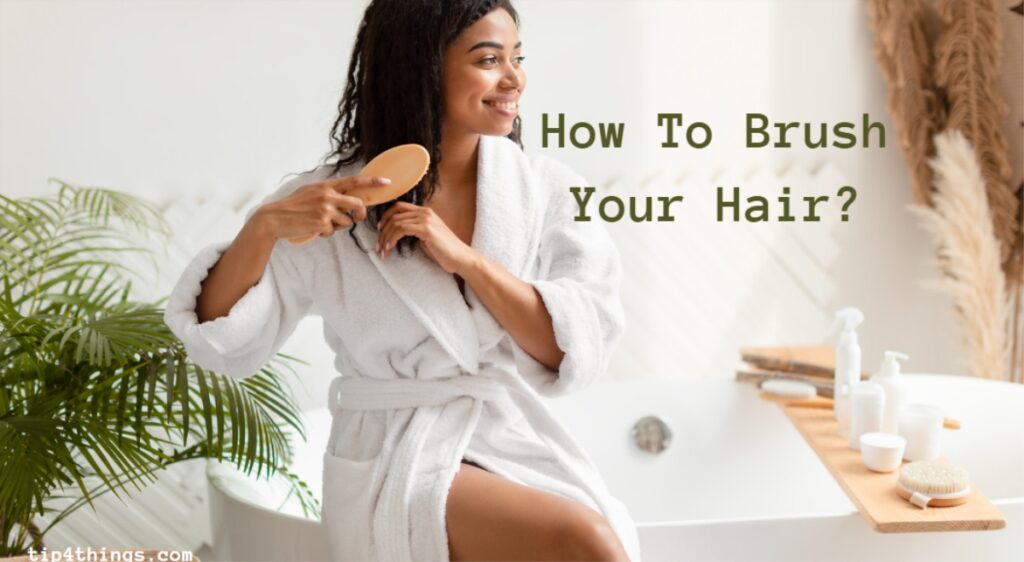
Brushing your hair might seem like a simple task, but doing it the right way can make a significant difference in maintaining its health and shine.
Here’s a guide to ensure you’re brushing your hair without causing any harm:
Pre-Brushing Rituals:
-
Towel Dry Gently: Before you even think of reaching for that brush, use a microfiber towel to gently dab away excess water from your hair.
-
Air Dry: Let your hair air dry to about 80% before brushing. This reduces the chances of breakage.
-
Detangling Products: Consider using a detangling spray or serum. It smoothens the strands, making the brushing process easier.
Choosing the Right Brush:
-
Bristle Type: Natural bristle brushes, like those made from boar hair, are gentle and help distribute natural oils throughout the hair.
-
Brush Shape: Paddle brushes are great for long, straight hair, while round brushes can add volume and are ideal for styling.
The Brushing Technique:
-
Start at the Tips: Always begin brushing from the tips and work your way up to the roots. This ensures you’re tackling tangles without pulling on the hair.
-
Brush in Sections: Especially if you have thick or long hair, divide it into sections. This ensures you’re not missing any tangles and reduces stress on the hair.
-
Avoid Over-Brushing: While it might be tempting to brush your hair frequently, it’s best to limit it to avoid wear and tear. Remember, quality over quantity!
Post-Brushing Care:
-
Scalp Massage: After brushing, give your scalp a gentle massage with your fingertips. It stimulates blood flow and promotes hair growth.
-
Hair Oils: Consider applying a light hair oil to the tips. It seals in moisture and adds an extra layer of protection.
Pro Tip: If you’re dealing with knots, hold the hair strand above the knot and gently work on it. This prevents unnecessary pulling and breakage.
5. Air Drying vs. Blow Drying: Which Reigns Supreme?
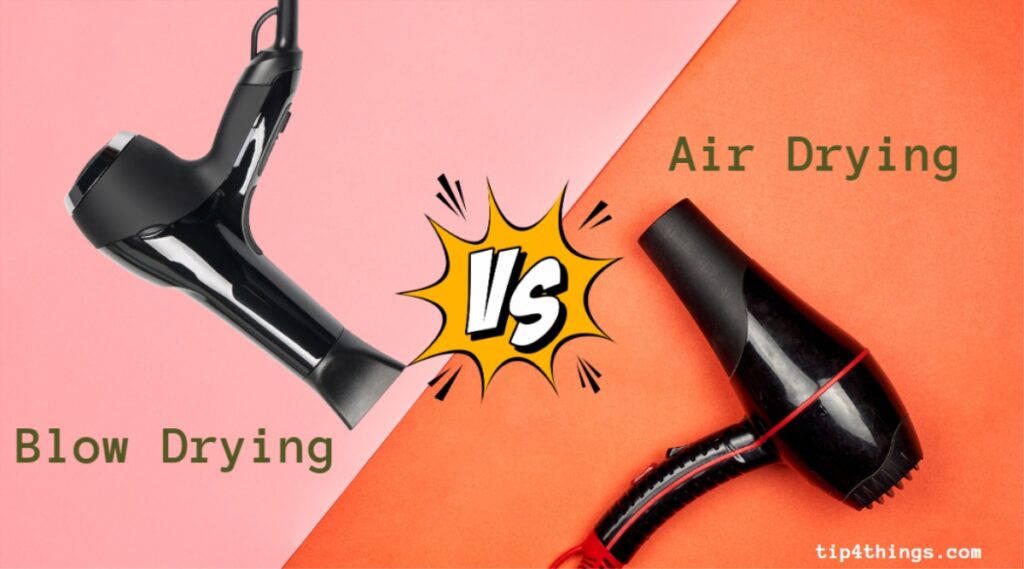
The age-old debate: to blow dry or to air dry? Both methods have their loyalists, and each comes with its own set of pros and cons.
Let’s break it down so you can make the best choice for your lovely locks:
Air Drying:
Pros:
-
Natural Look: Air drying often results in a more relaxed, natural texture, perfect for those effortless beachy waves.
-
Less Heat Damage: No direct heat means less potential for heat-induced breakage and split ends.
-
Energy Saver: Save on electricity and reduce your carbon footprint!
Cons:
-
Takes Time: Especially for those with thicker hair, air drying can be a lengthy process.
-
Potential for Frizz: Depending on the humidity and hair type, air drying can sometimes lead to frizz.
Blow Drying:
-
Speed: If you’re in a rush, blow drying can be a lifesaver.
-
Styling Versatility: Achieve a variety of looks, from sleek and straight to voluminous curls.
-
Controlled Drying: Reduce the risk of bacterial growth on the scalp by ensuring hair doesn’t remain damp for extended periods.
-
Heat Damage: Regular blow drying, especially without heat protectants, can weaken hair over time.
-
Can be Harsh: High heat settings and not holding the dryer at a safe distance can be tough on your tresses.
Golden Rule: If you choose to blow dry, always use a heat protection spray and opt for the cooler settings when possible. If you’re air drying, try to ensure your hair doesn’t remain damp for too long, as this can weaken the hair shafts.
6. Brushing Frequency: Striking the Right Balance
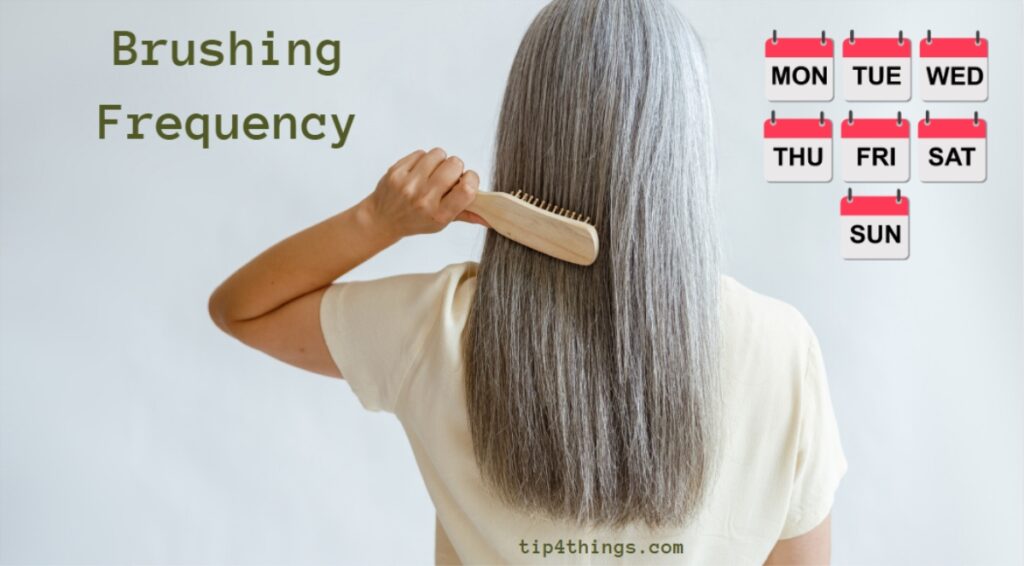
Brushing your hair is not just about detangling; it’s a ritual that can distribute natural oils, stimulate the scalp, and enhance hair shine. But how often should you really do it? Let’s break it down:
General Recommendation:
-
Twice a Day: Many hair care experts suggest brushing your hair twice daily – once in the morning to detangle and once in the evening to distribute oils and relax the scalp. Source
Hair Type Considerations:
-
Fine Hair: If you have fine hair, over-brushing can lead to breakage. Stick to the twice-a-day rule or even less.
-
Thick or Curly Hair: Those with thicker or curly hair might find that less frequent brushing works best to avoid frizz and breakage.
-
Oily Hair: If your scalp tends to be oily, brushing can help distribute the sebum, preventing it from building up at the roots.
Brushing Benefits:
-
Scalp Stimulation: Brushing can stimulate the scalp, promoting blood flow and potentially aiding in hair growth.
-
Natural Shine: Regular brushing, especially with natural bristle brushes, can enhance your hair’s natural shine by distributing oils evenly. Source
Things to Remember:
-
Be Gentle: Always use a gentle hand while brushing to avoid pulling and breaking the hair.
-
Clean Your Brush: Ensure your brush is clean. A dirty brush can reintroduce dirt and oil back into your hair.
-
Quality Over Quantity: It’s not about how often, but how well you brush. Using the right technique is crucial.
Pro Tip: Listen to your hair! If you notice increased breakage or your hair seems oilier, adjust your brushing frequency accordingly.
7. The Perils of Over-Brushing: When Too Much Isn’t a Good Thing
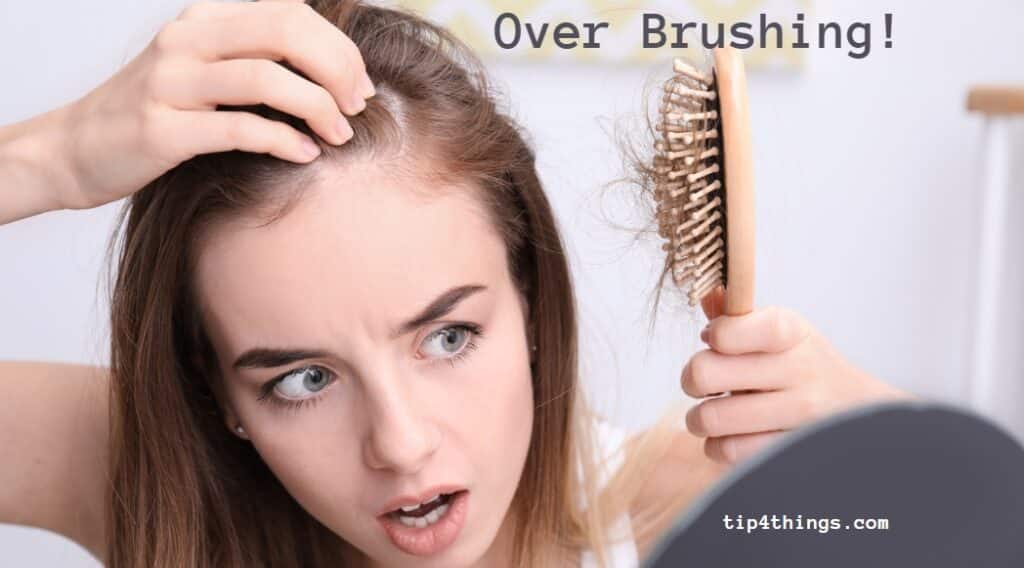
While brushing your hair can offer numerous benefits, like distributing natural oils and detangling, there’s a fine line between just right and too much. Over-brushing can lead to several hair woes. Let’s explore:
Damage to the Hair Cuticle:
-
The outer layer of your hair strand, known as the cuticle, can get damaged due to excessive brushing. This can lead to hair breakage and split ends. Source
Hair Thinning and Loss:
-
Vigorous and frequent brushing can weaken the hair strands, making them more prone to breakage.
-
Tugging too hard can also lead to hair loss, especially if the scalp gets irritated. Source
Scalp Damage:
-
Over-brushing can irritate the scalp, leading to redness and sensitivity.
-
An irritated scalp can also become dry and flaky, leading to dandruff.
Loss of Natural Shine:
-
While brushing can enhance shine by distributing oils, overdoing it can strip the hair of its natural oils, making it look dull and lifeless.
Tips to Avoid Over-Brushing:
-
Choose the Right Brush: Opt for brushes with soft, natural bristles.
-
Be Gentle: Use gentle strokes, and avoid tugging or pulling.
-
Listen to Your Hair: If you notice increased breakage, it might be time to reduce your brushing frequency.
Pro Tip: Remember, it’s not about the number of times you brush, but the quality of each brushing session. Always prioritize the health of your hair over styling.
Nutrition: Feed Your Hair from Within
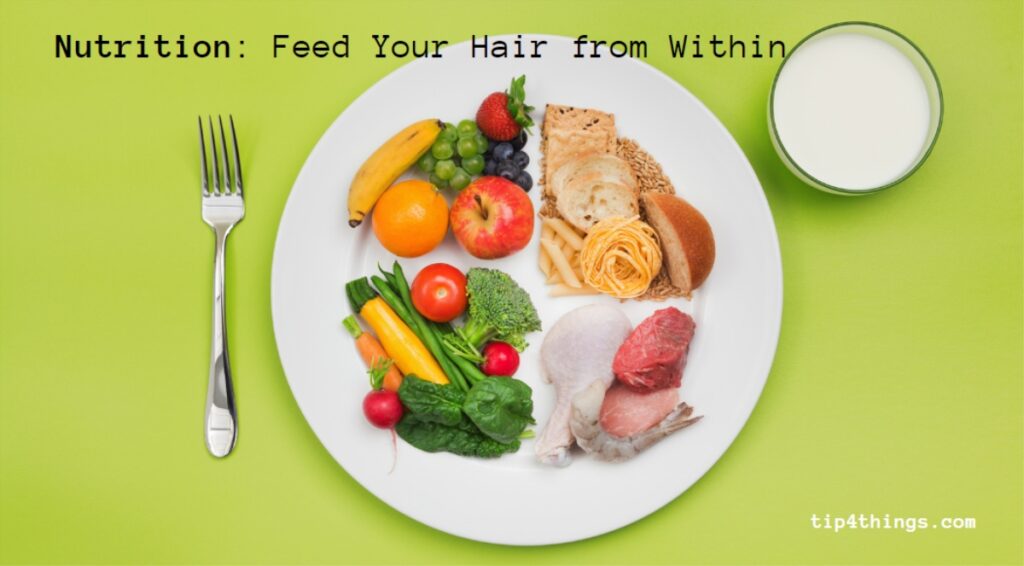
Gorgeous hair isn’t just about the products you apply externally; it’s also about what you feed your body. Just like any other part of you, your hair thrives when it gets the right nutrients.
Here’s a guide to the essential vitamins and minerals that can boost your hair’s health from the inside out:
Protein:
-
Why It’s Important: Hair is primarily made of protein, making it vital for hair strength and growth.
-
Sources: Lean meats, fish, eggs, dairy products, legumes, and nuts.
B Vitamins:
-
Why They’re Important: B vitamins, especially B6, B12, and folic acid, play a crucial role in hair growth and the formation of red blood cells which deliver oxygen to the scalp.
-
Sources: Whole grains, beans, peas, and citrus fruits. Source
Vitamin C:
-
Why It’s Important: Essential for the production of collagen, which strengthens hair.
-
Sources: Citrus fruits, strawberries, bell peppers, and broccoli.
Iron:
-
Why It’s Important: Iron helps red blood cells carry oxygen to hair follicles, promoting growth.
-
Sources: Red meat, spinach, lentils, and pumpkin seeds.
Zinc:
-
Why It’s Important: A deficiency in zinc can lead to hair loss and a dry, flaky scalp.
-
Sources: Beef, spinach, wheat germ, and pumpkin seeds. Source
Omega-3 Fatty Acids:
-
Why They’re Important: These fats keep the scalp hydrated, preventing dryness and dandruff.
-
Sources: Salmon, chia seeds, flaxseeds, and walnuts.
Biotin:
-
Why It’s Important: Often touted as the ‘hair growth vitamin’, biotin can help strengthen hair and reduce breakage.
-
Sources: Eggs, almonds, cauliflower, and avocados.
Golden Rule: A balanced diet is key. While supplements can help, it’s always best to get your nutrients from whole foods. If you’re considering supplements, consult with a healthcare professional first.
Hair Masks: Spa Day, Anyone?
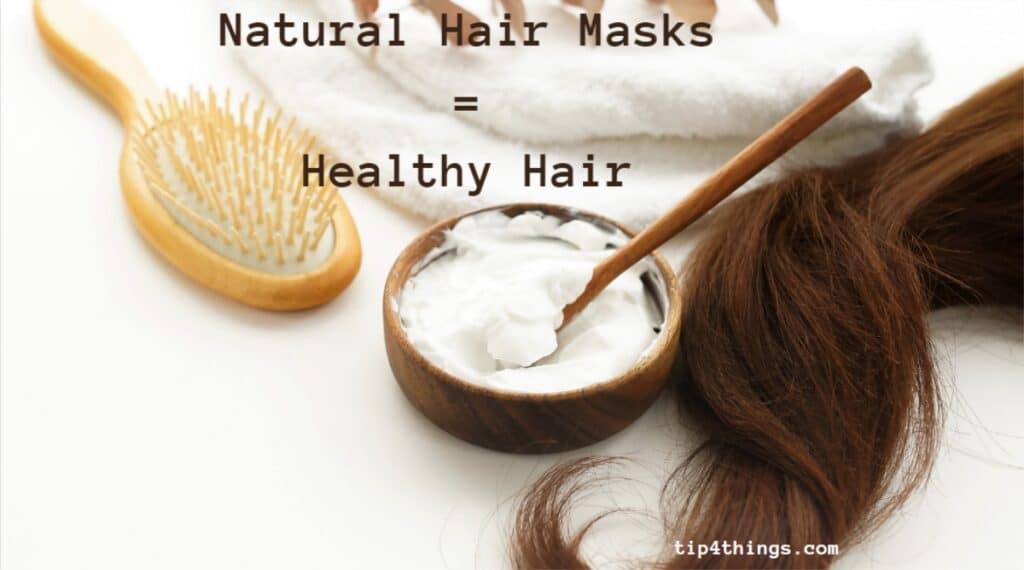
Hair masks are like a spa for your tresses. They offer deep conditioning, nourishment, and repair, going beyond what your regular conditioner can do. Whether you’re dealing with dryness, damage, or just want an extra boost of shine, there’s a hair mask for you. Here’s a guide to the wonders of hair masks:
Benefits of Hair Masks:
-
Deep Conditioning: Hair masks penetrate deeper into the hair shaft, offering intense hydration.
-
Damage Repair: They can help repair and strengthen hair that’s been damaged by heat styling, chemicals, or environmental factors.
-
Shine Boost: For hair that’s lost its luster, masks can bring back that coveted shine. Source
-
Frizz Control: Hair masks can tame and reduce frizz, making your hair more manageable.
-
Scalp Health: Some masks also cater to the scalp, ensuring it’s healthy and dandruff-free.
Star Ingredients in Hair Masks:
-
Bananas: Great for reducing frizz and adding moisture. Source
-
Honey: A natural humectant, it attracts moisture and locks it in.
-
Coconut Oil: Known for its deep conditioning properties.
-
Avocado Oil: Nourishes and strengthens hair.
-
Jojoba Oil: Mimics the natural oil of the scalp, offering hydration without being heavy.
-
Keratin: Strengthens hair and reduces breakage. Source
-
Shea and Cocoa Butter: These butters offer intense hydration, especially for very dry hair. Source
How to Use:
-
Frequency: Depending on your hair type and needs, you can use a hair mask anywhere from once a week to once a month.
-
Application: After shampooing, apply the mask to damp hair. Ensure you cover from roots to tips. Leave on for the recommended time (usually 10-30 minutes) and then rinse thoroughly.
Pro Tip: Always read the label of your hair mask. Some are designed for pre-shampoo treatments, while others are post-shampoo. Using them correctly ensures you get the maximum benefits.
Know Your Hair Type
Your hair type not only determines how your locks respond to styling and products but also how you should care for them.
Recognizing your hair type can be the key to ensuring its health and vibrancy. Here’s a guide to help you identify and care for your unique hair type:
Type 1: Straight Hair:
Characteristics: Naturally straight, sleek, and shiny.
Care Tips:
-
Avoid heavy products that can weigh it down.
-
Use lightweight oils or serums for shine.
-
Regular trims to prevent split ends.
Type 2: Wavy Hair:
Characteristics: Lies between straight and curly, forming S-shaped waves.
Care Tips:
-
Use hydrating shampoos and conditioners.
-
Avoid heavy creams; opt for mousse or light gels.
-
Air dry or use a diffuser to enhance natural waves. Source
Type 3: Curly Hair:
Characteristics: Defined, springy curls that can vary in size.
Care Tips:
-
Deep conditioning treatments to maintain moisture.
-
Use sulfate-free shampoos.
-
Detangle with a wide-tooth comb when hair is wet.
Type 4: Coily Hair:
Characteristics: Tight, zig-zag patterned coils.
Care Tips:
-
Moisturize regularly with creams and butters.
-
Protective styles like braids or twists can prevent breakage.
-
Always detangle with care, using leave-in conditioners. Source
General Tips for All Hair Types:
-
Regular Trims: This helps in preventing split ends and maintaining hair health.
-
Avoid Overwashing: Overwashing can strip natural oils. Find a routine that suits your hair type.
-
Heat Protection: If you’re using heat styling tools, always use a heat protectant.
-
Golden Rule: Everyone’s hair is unique. It’s essential to listen to your hair, understand its needs, and adapt your care routine accordingly.
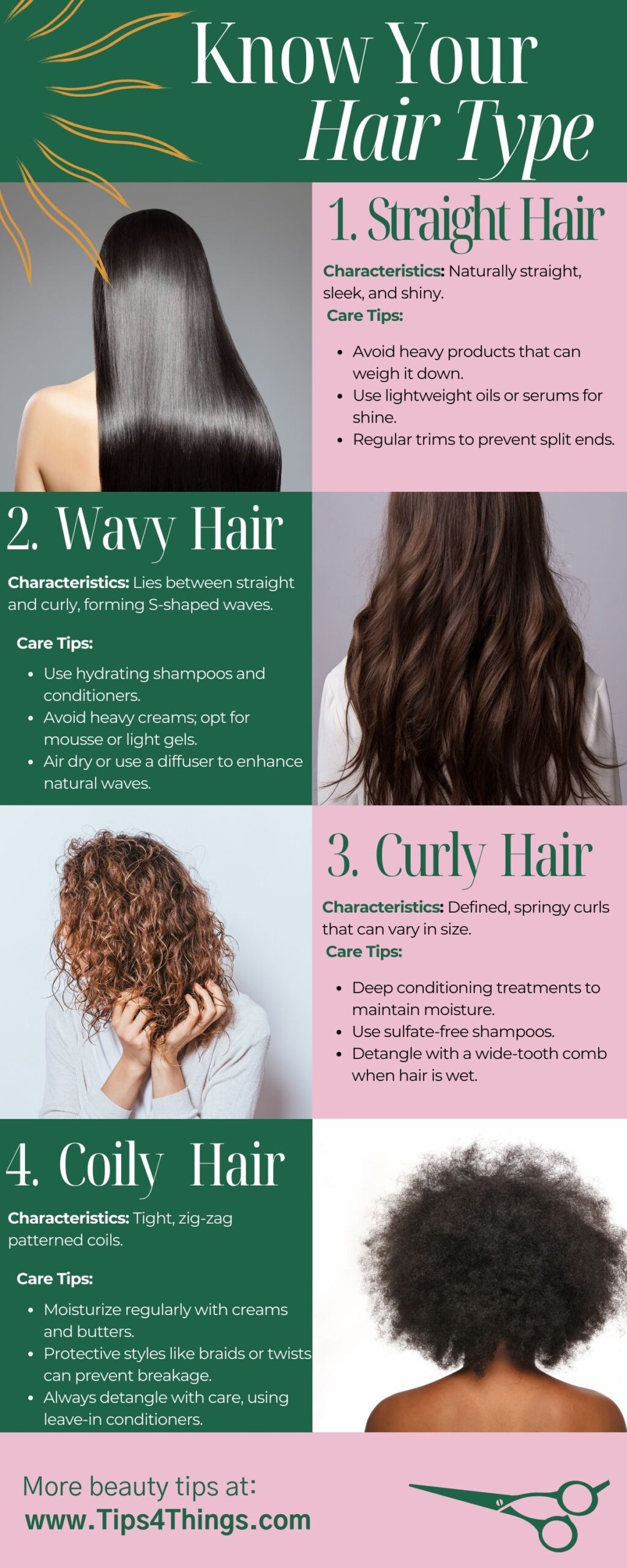
FAQ
1. I’ve heard a lot about washing hair too often. How many times a week is actually okay?
Great question! It really boils down to your hair type and lifestyle. If you’ve got oily hair or sweat a lot, you might want to wash every other day. But if your hair is dry or curly, once a week might be enough. Listen to your hair, and see what feels right!
2. I’m addicted to my straightener! But is using it daily too much?
We all love a good hair day! But using heat tools daily can be tough on your tresses. If you can’t resist, make sure you’re using a heat protectant and give your hair some “off days” to recover.
3. I’ve been finding more strands in my brush lately. Is that normal?
Hey, it’s completely normal to lose a few hairs here and there. We all do! But if you’re suddenly finding handfuls, it might be worth looking into. Things like a stressful month, changes in your diet, or even hormonal shifts can be culprits. If it keeps up, maybe it’s time for a chat with someone who knows hair inside out.
4. I’ve seen some fancy hair products with hefty price tags. Are they really that good?
Oh, the allure of luxury! But honestly, it’s not always about the price. It’s what’s inside that counts. You’d be surprised how many amazing products are just waiting to be discovered at your local drugstore!

